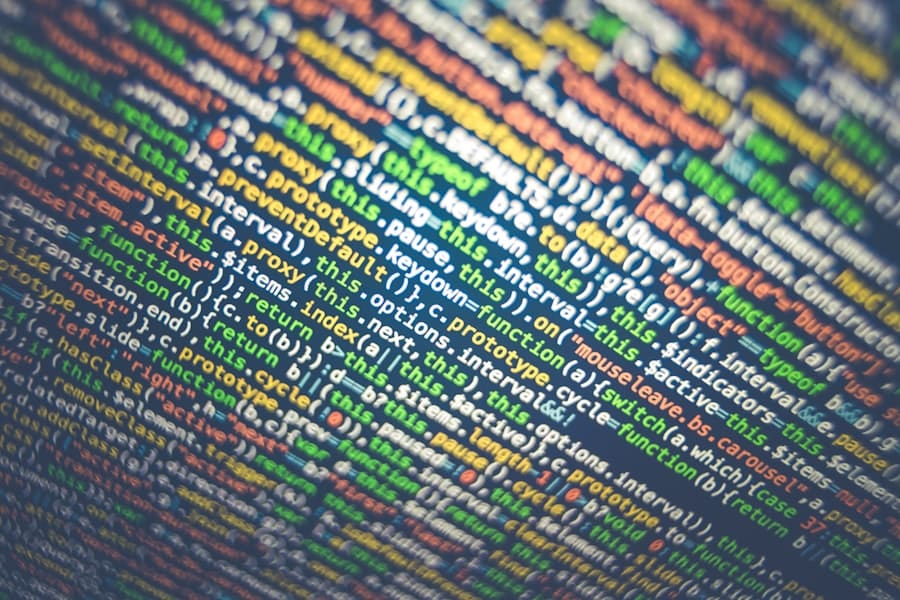Data integrity is a cornerstone of artificial intelligence (AI) systems, serving as the foundation upon which these models are built. The accuracy, consistency, and reliability of data directly influence the performance of AI algorithms. When data integrity is compromised, the outputs generated by AI models can become misleading or entirely erroneous.
This is particularly critical in high-stakes applications such as healthcare, finance, and autonomous vehicles, where decisions based on flawed data can lead to catastrophic outcomes. For instance, in medical diagnostics, an AI model trained on inaccurate patient data may misdiagnose conditions, leading to inappropriate treatments and potentially endangering lives. Moreover, maintaining data integrity is not merely a technical challenge; it also encompasses ethical considerations.
The biases present in training datasets can propagate through AI systems, resulting in discriminatory practices that affect marginalized groups. For example, if an AI model used for hiring decisions is trained on historical data that reflects gender or racial biases, it may inadvertently perpetuate these biases in its recommendations. Thus, ensuring data integrity is not only about safeguarding the technical aspects of AI but also about fostering fairness and accountability in its applications.
Key Takeaways
- Data integrity is crucial for the accuracy and reliability of AI models.
- AI models are vulnerable to data tampering, which can compromise their performance and outputs.
- Cybersecurity plays a critical role in protecting the integrity of data used in AI models.
- Encryption and access controls are essential for safeguarding AI data from unauthorized access and tampering.
- Detecting and preventing data breaches is essential for maintaining the integrity of AI systems.
The Vulnerability of AI Models to Data Tampering
AI models are inherently vulnerable to various forms of data tampering, which can occur at multiple stages of the data lifecycle. One common method of tampering is through adversarial attacks, where malicious actors introduce subtle perturbations to input data that can lead to significant misclassifications by the AI model. For example, researchers have demonstrated that by slightly altering pixels in an image, they can cause an AI system to misidentify objects with high confidence.
This vulnerability highlights the need for robust defenses against such attacks, as even minor alterations can undermine the trustworthiness of AI outputs. Additionally, the integrity of training datasets can be compromised through data poisoning attacks. In these scenarios, attackers inject malicious data into the training set, which can skew the model’s learning process and lead to biased or incorrect predictions.
A notable instance occurred when researchers found that by adding a small percentage of mislabeled images to a dataset used for training a facial recognition system, they could significantly degrade its accuracy. This underscores the critical need for vigilance in monitoring and validating the data used to train AI models, as even a small amount of tampered data can have far-reaching consequences.
The Role of Cybersecurity in Protecting Data Integrity

Cybersecurity plays a pivotal role in safeguarding data integrity within AI systems. As AI becomes increasingly integrated into various sectors, the potential attack surface expands, making it essential to implement robust cybersecurity measures. These measures include firewalls, intrusion detection systems, and regular security audits to identify vulnerabilities before they can be exploited.
Furthermore, cybersecurity protocols must extend beyond mere perimeter defenses. It is crucial to adopt a holistic approach that encompasses data encryption, secure data storage solutions, and stringent access controls.
For instance, employing encryption techniques ensures that even if data is intercepted during transmission or storage, it remains unreadable without the appropriate decryption keys. This layer of protection is vital for maintaining the confidentiality and integrity of sensitive datasets used in AI training and inference processes.
Implementing Encryption and Access Controls to Safeguard AI Data
Encryption serves as a fundamental tool in protecting the integrity of data utilized by AI models. By converting plaintext data into ciphertext through cryptographic algorithms, organizations can ensure that unauthorized parties cannot access or alter sensitive information. For example, using Advanced Encryption Standard (AES) algorithms allows organizations to secure their datasets effectively while maintaining performance efficiency.
This is particularly important when dealing with large volumes of data typical in AI applications. In addition to encryption, implementing robust access controls is essential for safeguarding AI data. Role-based access control (RBAC) systems can restrict access to sensitive datasets based on user roles within an organization.
This ensures that only authorized personnel can modify or interact with critical data elements. Moreover, employing multi-factor authentication (MFA) adds an additional layer of security by requiring users to provide multiple forms of verification before gaining access to sensitive information. Together, these strategies create a fortified environment that minimizes the risk of unauthorized tampering and enhances overall data integrity.
Detecting and Preventing Data Breaches in AI Systems
The detection and prevention of data breaches are paramount in maintaining the integrity of AI systems. Organizations must implement continuous monitoring solutions that can identify unusual patterns or anomalies indicative of potential breaches. For instance, machine learning algorithms can be employed to analyze user behavior and flag any deviations from established norms.
By leveraging these advanced techniques, organizations can proactively address security threats before they escalate into significant breaches. Moreover, incident response plans should be established to ensure swift action in the event of a detected breach. These plans should outline clear protocols for containment, investigation, and remediation efforts.
Regularly conducting penetration testing and vulnerability assessments can also help organizations identify weaknesses in their systems before they are exploited by malicious actors. By fostering a culture of vigilance and preparedness, organizations can significantly reduce the likelihood of data breaches impacting their AI models.
Ensuring the Accuracy and Reliability of AI Outputs

Ensuring the accuracy and reliability of AI outputs is intrinsically linked to maintaining data integrity throughout the model’s lifecycle. One effective approach is to implement rigorous validation processes during both training and testing phases. Cross-validation techniques can help assess how well an AI model generalizes to unseen data by partitioning the dataset into multiple subsets for training and validation purposes.
This method not only enhances model performance but also provides insights into potential biases present in the training data. Additionally, continuous monitoring of AI outputs post-deployment is essential for identifying any drift or degradation in performance over time. As real-world conditions change, models may require retraining with updated datasets to maintain their accuracy and relevance.
Implementing feedback loops that incorporate user input and real-world performance metrics can facilitate this process, ensuring that AI systems remain reliable and effective in their applications.
Addressing Ethical Concerns in AI Data Integrity
The ethical implications surrounding data integrity in AI cannot be overlooked. As AI systems increasingly influence decision-making processes across various domains, it is imperative to address concerns related to bias, transparency, and accountability. Organizations must prioritize ethical considerations when curating training datasets to ensure they are representative and free from harmful biases.
This involves actively seeking diverse sources of data and employing techniques such as fairness-aware machine learning to mitigate bias during model training. Transparency is another critical aspect of ethical AI practices. Stakeholders should be informed about how data is collected, processed, and utilized within AI systems.
Providing clear documentation regarding the methodologies used for data selection and model training fosters trust among users and stakeholders alike. Furthermore, establishing accountability mechanisms ensures that organizations take responsibility for the outcomes produced by their AI models, reinforcing ethical standards within the industry.
Collaborating with Cybersecurity Experts to Enhance Data Security in AI Models
Collaboration with cybersecurity experts is essential for enhancing data security within AI models. These professionals bring specialized knowledge and skills that can help organizations identify vulnerabilities specific to their AI systems and implement tailored security measures accordingly. By engaging cybersecurity experts during the design phase of AI projects, organizations can proactively address potential security risks before they manifest.
Moreover, ongoing partnerships with cybersecurity firms can facilitate continuous improvement in security practices as new threats emerge. Regular training sessions and workshops led by cybersecurity professionals can equip teams with the latest knowledge on best practices for safeguarding data integrity in AI systems. This collaborative approach not only strengthens security measures but also fosters a culture of awareness and vigilance within organizations as they navigate the complex landscape of AI development and deployment.
By prioritizing these aspects, organizations can build resilient AI systems that deliver accurate and reliable outputs while safeguarding against potential threats to data integrity.
In a recent article by Hacker Noon, they cover a range of topics across the tech sector, including the importance of cybersecurity in ensuring data integrity in AI models. The role of cybersecurity in protecting sensitive data and preventing unauthorized access is crucial in the development and deployment of AI technologies. To learn more about how cybersecurity measures can safeguard AI models, check out the article here.
FAQs
What is the role of cybersecurity in ensuring data integrity in AI models?
Cybersecurity plays a crucial role in ensuring data integrity in AI models by protecting the data from unauthorized access, tampering, and other malicious activities that could compromise the accuracy and reliability of the AI models.
How does cybersecurity help in maintaining data integrity in AI models?
Cybersecurity helps in maintaining data integrity in AI models by implementing measures such as encryption, access controls, authentication, and monitoring to safeguard the data from cyber threats and ensure that it remains accurate and trustworthy for the AI algorithms.
What are the potential risks to data integrity in AI models without proper cybersecurity measures?
Without proper cybersecurity measures, AI models are vulnerable to risks such as data breaches, unauthorized modifications to the training data, injection of biased or manipulated data, and other forms of cyber attacks that can compromise the integrity of the data and the reliability of the AI models.
How can organizations ensure data integrity in AI models through cybersecurity practices?
Organizations can ensure data integrity in AI models through cybersecurity practices such as implementing strong encryption, access controls, regular security audits, threat monitoring, and incident response plans to protect the data and maintain the accuracy and reliability of the AI models.
What are the potential consequences of compromised data integrity in AI models?
Compromised data integrity in AI models can lead to inaccurate predictions, biased decision-making, loss of trust in the AI systems, financial losses, legal and regulatory implications, and damage to the organization’s reputation. Therefore, maintaining data integrity through cybersecurity is essential for the success and trustworthiness of AI models.

